Abstract
Surveys were conducted in one urban and two rural regions of the United Republic of Cameroon to estimate the annual incidence of paralytic poliomyelitis. Three different survey methods were used: a review of hospital and clinic registers, a school survey, and a house-to-house survey. The house-to-house survey identified the highest number of lame children and gave estimates of incidence of between 18.8 and 32.6 per 100 000 population in the three regions. The estimates of incidence obtained by the two other survey methods in the urban region did not differ significantly from that obtained by house-to-house survey but, in the rural regions, were significantly lower. It is concluded that house-to-house surveys are a sensitive method of identifying lame children in both urban and rural regions. School surveys and review of hospital and clinic registers, while equally sensitive in urban regions, are less sensitive in rural regions and may significantly underestimate the annual incidence of paralytic poliomyelitis. These limitations should be borne in mind when using the survey methods.
Full text
PDF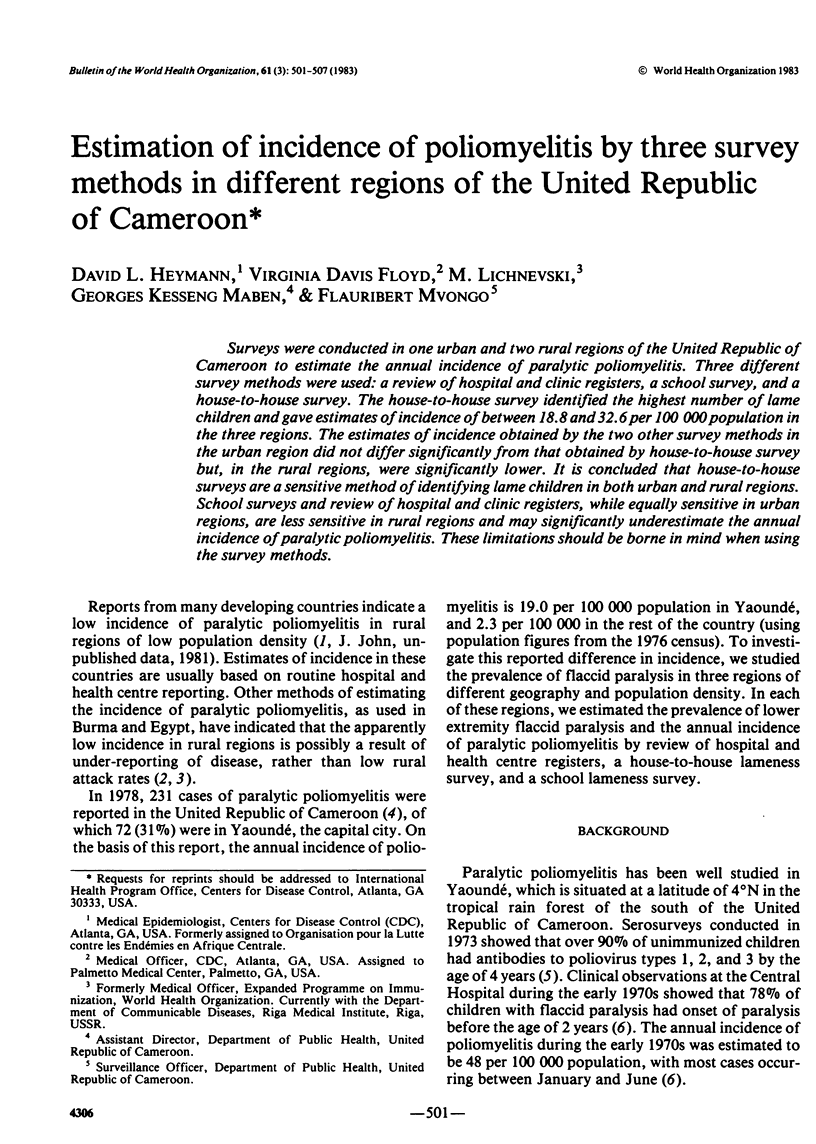
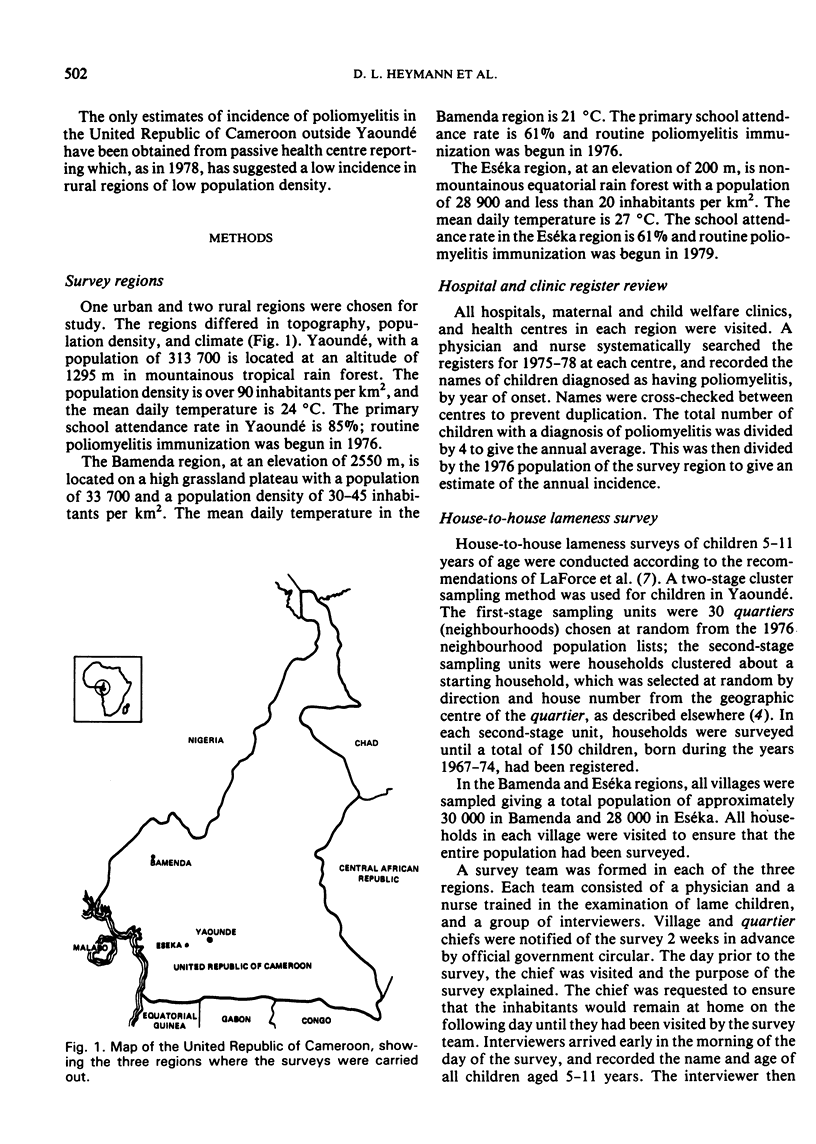
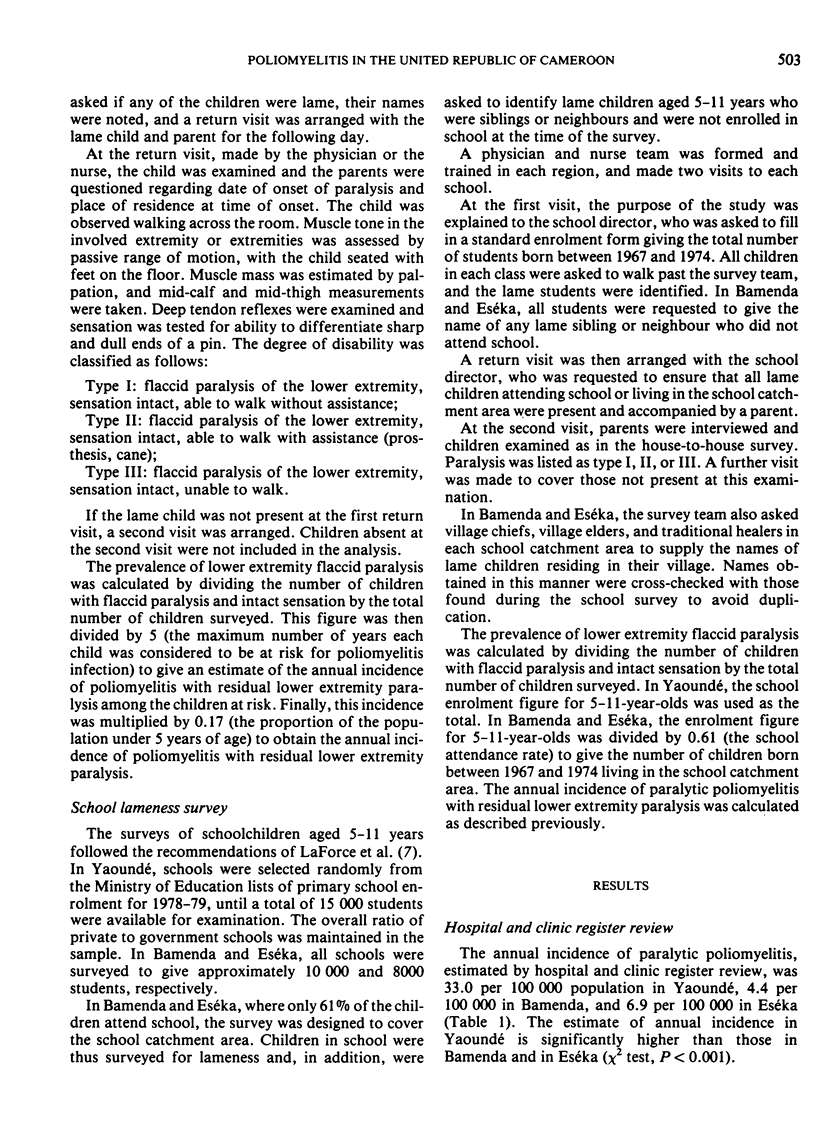
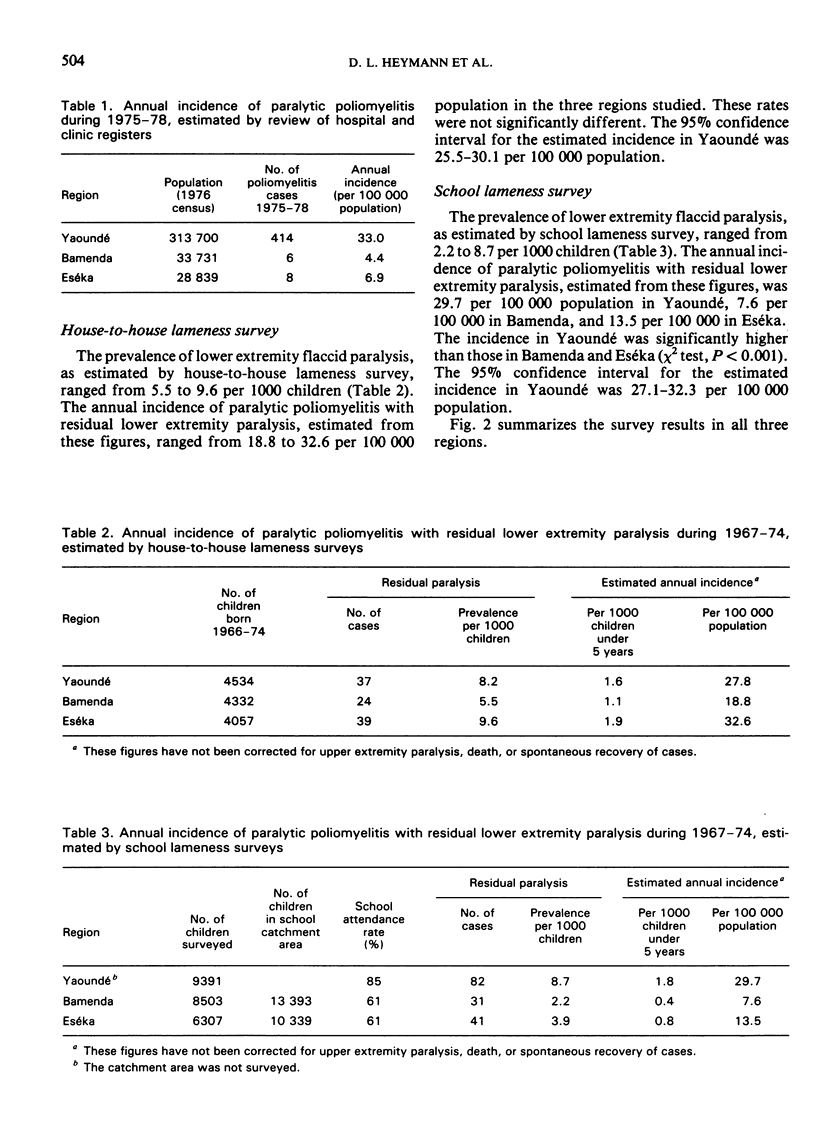
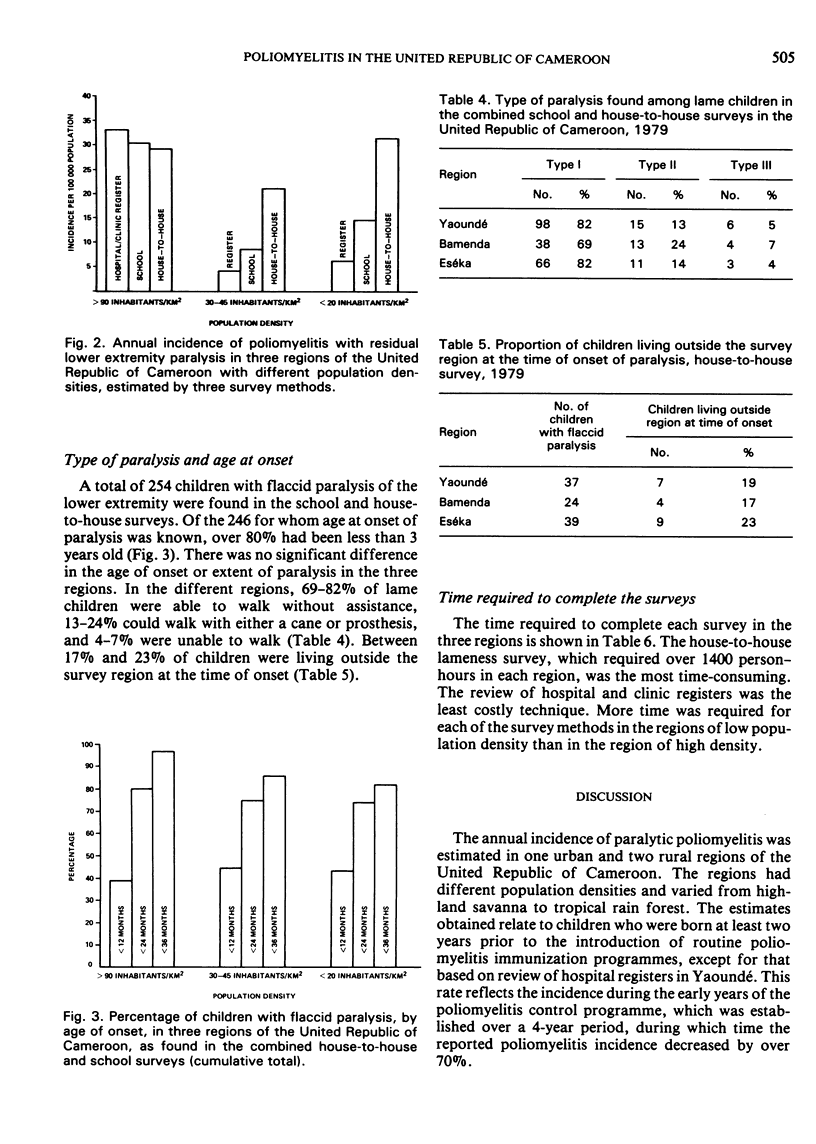
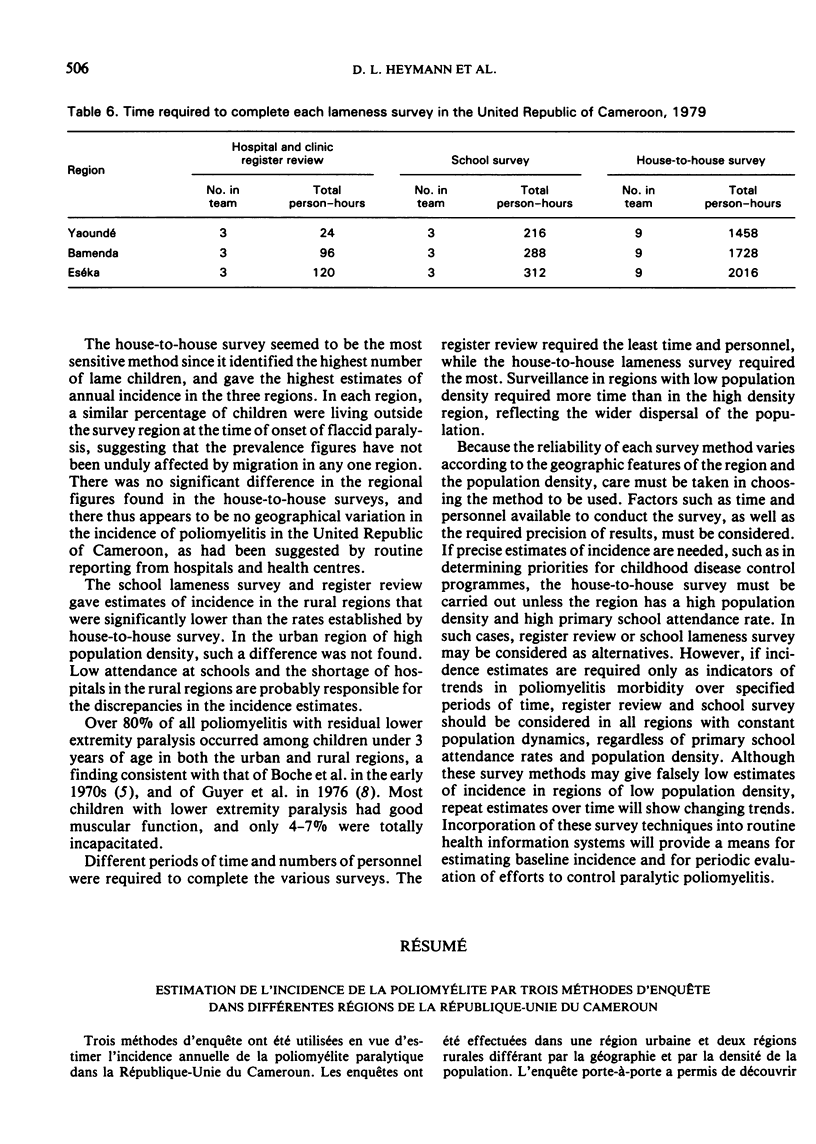
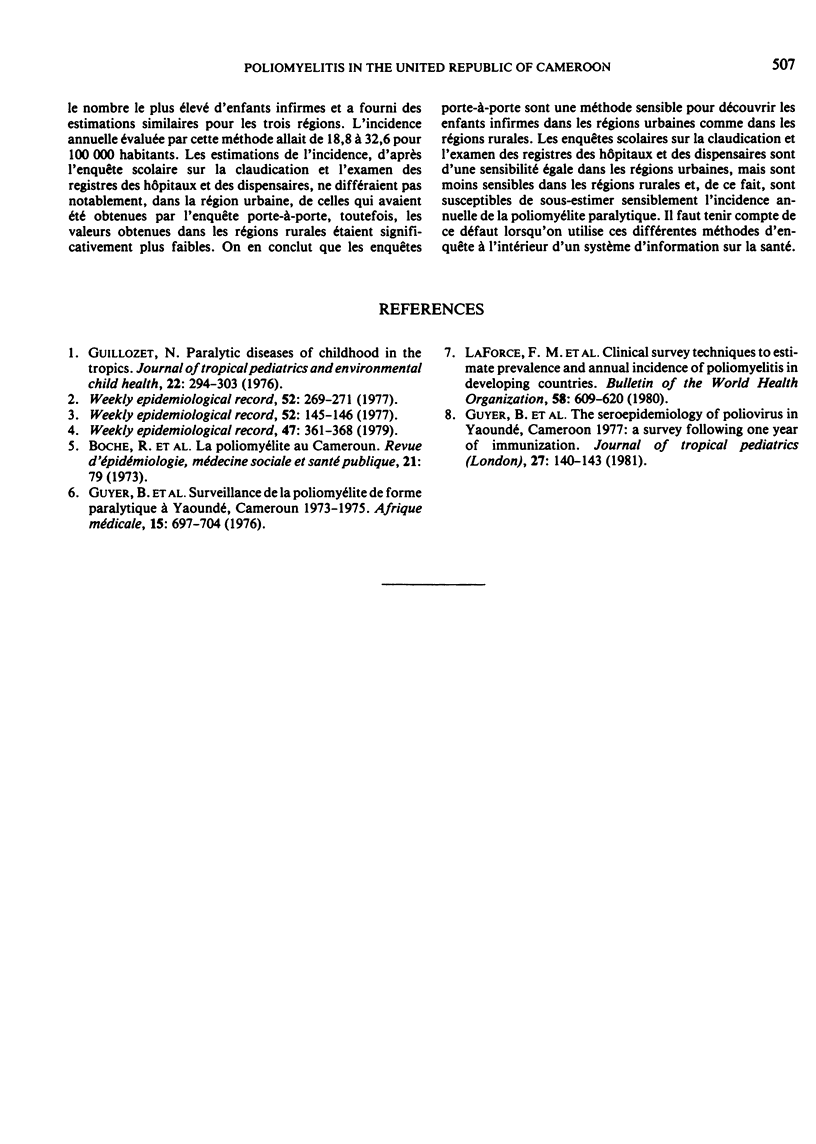
Selected References
These references are in PubMed. This may not be the complete list of references from this article.
- LaForce F. M., Lichnevski M. S., Keja J., Henderson R. H. Clinical survey techniques to estimate prevalence and annual incidence of poliomyelitis in developing countries. Bull World Health Organ. 1980;58(4):609–620. [PMC free article] [PubMed] [Google Scholar]


